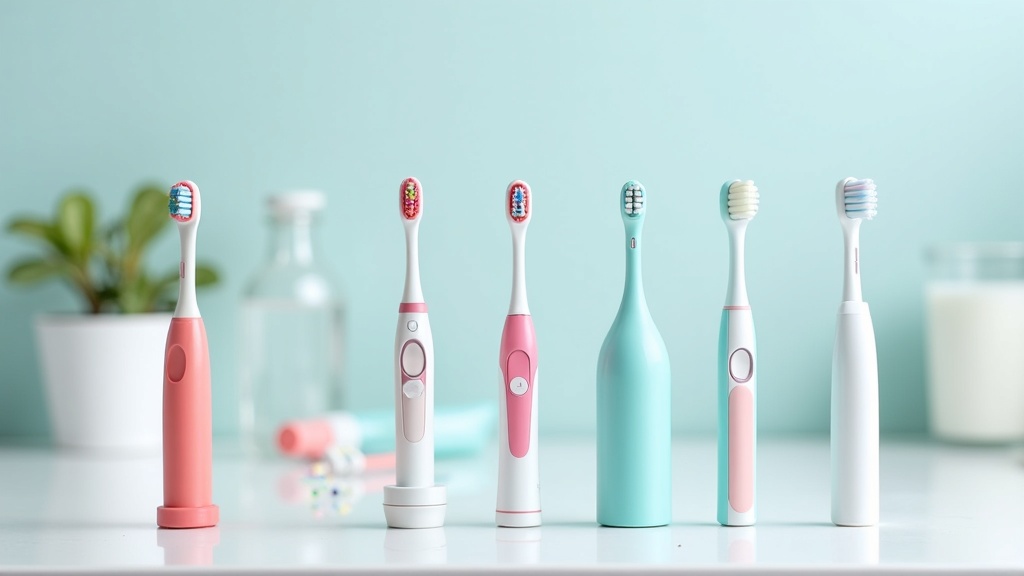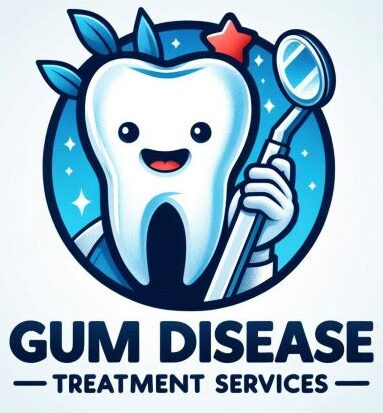 Your everyday oral care routine might be significantly impacted by your toothbrush choice. It’s not always easy to choose the perfect one because there are so many different kinds, shapes, and bristle alternatives. With so many options, it’s easy to feel a little overwhelmed when browsing the dentistry section of the store or browsing online.
Your everyday oral care routine might be significantly impacted by your toothbrush choice. It’s not always easy to choose the perfect one because there are so many different kinds, shapes, and bristle alternatives. With so many options, it’s easy to feel a little overwhelmed when browsing the dentistry section of the store or browsing online.
I am a strong believer in promoting sustainable healthy habits. Taking the time to pick a toothbrush that matches your personal needs helps keep your teeth and gums in great shape and can even make brushing feel less like a chore. I’ll walk through what to look for, some practical tips, and answers to common questions so you can feel confident about your next toothbrush purchase. It’s amazing how a small change to your routine can give your smile a real boost as well as a better visit to your local dentist, and the right toothbrush is an important piece of that puzzle.
Step 1: Consider Your Brushing Habits and Needs
Picking a toothbrush starts with thinking about your brushing style and what your teeth and gums need. Everyone’s mouth is a bit different, so what works for your friend or partner might not work for you. Take a moment to get a sense of your habits. If you have unique dental needs or have had trouble in the past with certain brushes, keep those things in mind as you read on. Getting this step right will save you a lot of frustration down the line.
Ask Yourself:
- Do my gums bleed or feel sensitive when I brush?
- Am I good about brushing for the full two minutes?
- Do I have braces, crowns, or dental bridges?
- Is brushing often rushed or uncomfortable?
Types of Brushers:
- Gentle Brusher – Prefers a softer touch or deals with gum sensitivity.
- Efficient Brusher – Needs something quick and thorough, possibly interested in electric brushes.
- Detailed Brusher – Spends extra time handling dental appliances or specific spots.
Knowing your usual approach helps narrow down what features you’ll likely appreciate in a toothbrush. Sometimes, a simple habit like brushing too hard is solved just by paying attention to these cues and selecting a gentler brush. For others, more advanced options can give a boost to daily cleaning.
Step 2: Manual vs. Electric Toothbrushes
This is the big decision most people start with including myself when I was diagnosed with gum disease. Both manual and electric toothbrushes can get your teeth clean, but each has pros and cons. Think about whether you’re looking for simplicity or want some extra help with technology.
If you talk to dental professionals, you’ll usually hear that it’s less about what you use, and more about how you use it. Even so, there are some differences you might want to consider.
Manual Toothbrushes:
- Budget-friendly and easy to find almost anywhere.
- No need to charge or use batteries.
- Fully under your control; you decide the speed and pressure.
- Great for travel and backup.
Electric Toothbrushes:
- They usually have built-in timers so you get a full, even clean.
- The vibrating or oscillating heads do a lot of the work for you.
- Some models track your brushing habits with apps or give alerts if you brush too hard.
- Can be super useful for people with limited hand movement or who struggle with technique.
Personally, I’ve noticed that electric toothbrushes can make brushing feel kind of high-tech since I have always had issues with technique and heavy pressure. But I still keep a manual brush around for trips or emergencies. Some people find that swapping between the two helps keep things interesting and motivates them to stick with good habits.
Step 3: Bristle Type and Hardness
If you check out any dentist’s advice, you’ll catch them recommending soft bristles almost every time. Hard or even medium bristles can cause gum damage and wear away enamel, especially if you brush with a heavy hand like I do.
Bristle Options:
- Soft – Gentle on gums and enamel; recommended for most people.
- Medium – A bit firmer; can be tough on sensitive gums.
- Hard – Rarely recommended; those can actually scrape your gum line.
People with sensitive teeth or gums feel a real difference with a soft brush. If you tend to push harder than you should when brushing, soft bristles are even more important. For most of my friends and family, including myself, soft bristles are the safest bet and still get you a thorough clean. One common misconception is that harder bristles clean better, but they often just tone down your long-term dental health.
Step 4: Toothbrush Head Shape and Size
Toothbrush heads come in different shapes, from rounded to rectangular, and in a few sizes. The most important thing is finding a brush head that easily reaches all areas of your mouth, including your molars and those awkward back corners. If your brush is too large or oddly shaped for your mouth, it’s easy to miss crucial spots where plaque can hide.
What to Look For:
- Smaller heads make it easier to clean around back teeth and tight spots.
- Rounded bristles help protect your gums and teeth.
- Flexible necks can add comfort and reach.
I’ve found that a toothbrush head about 1 inch tall and half an inch wide is pretty comfortable for most adults. If you have a smaller mouth or a sensitive gag reflex, a compact brush head is worth digging for. Don’t forget—kids need much smaller brush heads, and seniors or those with limited dexterity may want to try shorter handles or modified designs for ease of use.
Step 5: Handle Comfort and Grip
You want your toothbrush to feel comfortable in your hand, especially if you’re brushing the right way for two minutes. If a brush handle feels awkward, too slippery, or hard to control, you’ll probably be less likely to use it regularly or brush as thoroughly.
- Rubber grips and ergonomic designs can help keep things comfy and steady.
- Lighter handles are easiest for kids, while chunkier handles work for people who have arthritis or weak grip strength.
If you’re shopping in person, I like to pick up a few different options and see which feels best. It really makes a difference over time. If shopping online, check out reviews and close-up photos of the handle to help you decide.
Step 6: Features for Special Dental Needs
Different smiles have different needs. Some toothbrush options are made specifically for people with certain requirements, so it’s worth looking out for specialized designs if you need them.
- Orthodontic Toothbrushes: Special bristle patterns or cuts help clean around braces and wires.
- Interdental Brushes: Handy if you have wider gaps between your teeth or dental work like bridges.
- Kids’ Toothbrushes: Smaller heads, fun colors, and softer grips that make brushing less of a struggle.
- SensitiveGum Brushes: Extra soft bristles and gentle brushing modes for people prone to discomfort.
If any of these sound like they might fit your situation, check the packaging carefully; brands often highlight these options on the label. Your dental professional can suggest the best special features for your mouth, so feel free to ask for tips next time you’re in for a cleaning. Some people also find value in subscription services that send replacement heads or brushes on a schedule, helping them keep their supplies fresh.
Step 7: Replace Your Toothbrush Regularly
Picking a good toothbrush is only one part of the story. Swapping out your brush every three to four months, or sooner if the bristles start to fray, is super important for good oral health. Old bristles just don’t clean as well, and worn brushes can actually hold onto bacteria. I set a reminder on my phone to help me stay on top of it, and some new brushes even change color as a reminder to replace them. If you’ve been sick recently, swap your toothbrush even sooner to help prevent germs from sticking around. Thinking ahead about replacements keeps your mouth healthier in the long run.
Common Questions & Troubleshooting
How do I know if my toothbrush is too hard on my gums?
If you notice bleeding, soreness, or your gums looking puffy, your brush might be too hard or your technique too aggressive. Soft bristles and lighter pressure usually help. Switch to a soft brush and lighten up your grip, then check if your symptoms improve after a week or two.
Are electric toothbrushes really better?
Studies show that electric toothbrushes can help some people remove more plaque, especially if you have trouble brushing the right way with a manual brush. That said, brushing thoroughly and consistently matters more than which tool you use. If you like a bit of tech in your daily routine, an electric brush might give you a boost, but winning at oral health comes down to regularity and good habits.
Note: Ever since I switched to electric many years ago, my dentist has had to do significantly less scraping on my teeth, including between my teeth, and less special dental work. Also, my gums have not been bleeding, and my gum loss has not worsened. So, I give electronic tooth brushes full credit fortheir effectiveness.
How long should I brush each time?
- Aim for two full minutes, morning and night. Builtin timers on electric models make this super easy.
- Try listening to a two minute song or using a timer on your phone if you’re using a manual brush.
Is it safe to share a toothbrush?
Sharing with anyone is strongly not recommended since it can pass germs and bacteria between people. Everyone should have their own brush! A simple color coding or a personalized holder helps everyone keep their brush separate.
Quick Recap & What To Do Next
A good toothbrush feels comfortable for you, matches your dental needs, and makes it easier to stick to your brushing routine. Here’s a quick plan to pick your next one:
- Think about how you like to brush and any dental concerns you have.
- Decide between a manual or electric brush based on your style and budget.
- Go for soft bristles to protect your teeth and gums.
- Pick a comfortable brush head size and shape.
- Make sure the handle feels steady and doesn’t slip.
If you’ve been using the same style of toothbrush for years, try switching things up. You might find a new favorite! If you have a question or want to share which toothbrush works for you? Drop your thoughts below. Happy brushing!
